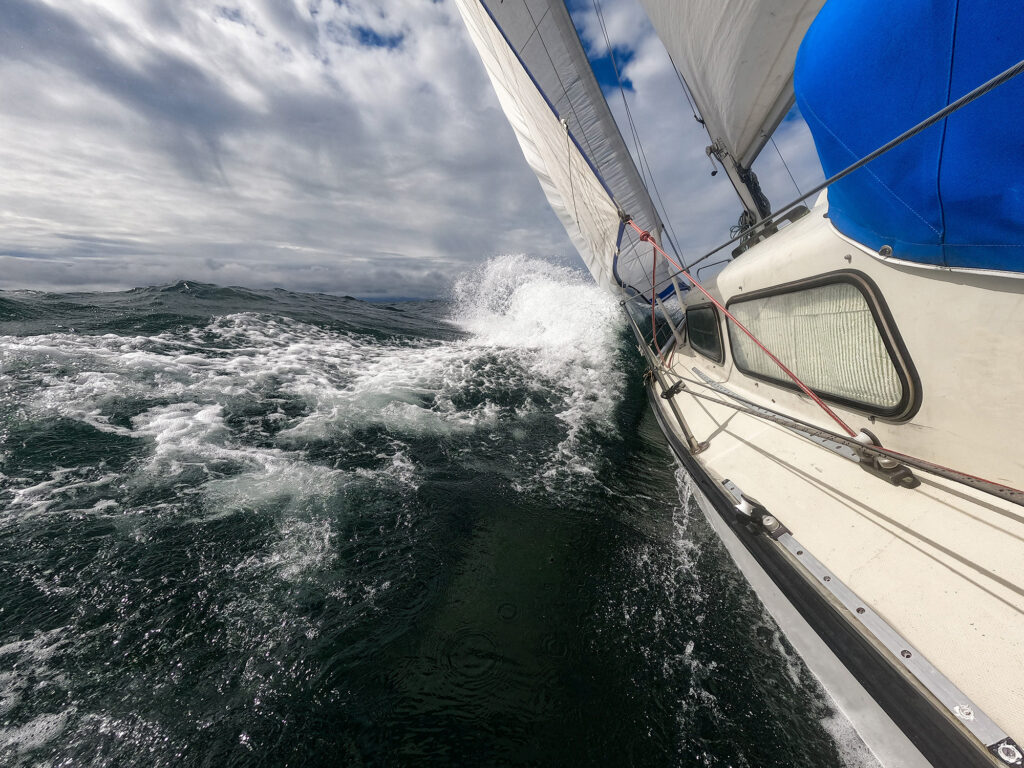Winds of Change
 More than any other group, sailors possess an acute awareness of nature’s nuances, from wind and waves to storms and calms.
Hladchenko Viktor/stock.adobe.com
More than any other group, sailors possess an acute awareness of nature’s nuances, from wind and waves to storms and calms.
Hladchenko Viktor/stock.adobe.com
Regardless of your position on climate change, two undeniable truths have emerged in recent times: Our oceans are warming, and severe weather events are occurring more sporadically and with greater intensity. As has many a cruiser, I’ve had the displeasure of witnessing both of these happenings firsthand.
On one boating excursion with friends this past summer in the Florida Keys, not too far from Key Largo, we floated over branch after branch of lifeless white coral that looked more like something from a snow globe than a tropical paradise. Those silvery corals, which are becoming more the norm than the exception these days, are but a small telltale of a much broader issue: In and around the tropics, coral reefs are bleaching at an alarming pace, and many of them are dying.
As the science has been telling us, one culprit is extreme heat. Raise your hand if you thought this past summer felt a little warmer than usual (read: “like the fiery pits of hell” in some locales). As I understand it from some of our islands-based readers, the Caribbean was cooked—literally. Some buoys where I live in South Florida registered temperatures in excess of 100 degrees in July. That’s not a nice, warm bath; that’s a hot tub. And it’s well beyond the threshold for coral bleaching in the region.
Not only are oceans warming, but they are also becoming more acidic as they absorb carbon dioxide from the air, posing a threat to marine life that relies on calcium carbonate to form hard shells and other vital components of marine ecosystems. It’s not only about aesthetics. Climate scientists, with decades of research, foresaw these consequences, and we are now witnessing the realization of their predictions with stronger storms and more-frequent extreme-weather events.
As the consequences of these changes ripple through the maritime world, the global sailing community is facing unprecedented challenges. More than any other group, sailors possess an acute awareness of nature’s nuances, from wind and waves to storms and calms. Climate change has entered their glossary, becoming a defining factor in their cruising endeavors. The impacts are far-reaching.
As we reported in our November/December 2023 issue, changes in global weather conditions across the world’s cruising routes prompted the need for an update to the book Cornells’ Ocean Atlas. According to its co-author, Jimmy Cornell, trade winds, once reliable companions for sailors, are now shifting in strength and consistency because of the accelerated warming of polar regions. Once regarded as one of the most reliable trade-wind routes in the world, the trans-Atlantic passage, a traditional route for more than 1,000 boats annually, has become less predictable, prompting sailors to seek alternative paths to find favorable winds.
Fast-forward to Cornell’s latest findings, which reflect on a forewarning he made in 1994 about the impact of climate change on sailing routes, emphasizing the increasing unpredictability and intensity of weather conditions. In the 30 years since, global weather patterns have in fact undergone significant changes, marked by rising ocean temperatures, melting ice caps, and more-active hurricane seasons. Interviews with fellow sailors reveal unanimous concern about climate change’s threat to voyages and its broader impact on humanity, while issues such as overfishing, pollution, and rising sea levels are also raising concerns.
Despite these challenges, sailors express a determination to embark on long voyages, emphasizing safety measures and reliable weather information. While the insurance industry anticipates increased challenges and costs because of climate-change-related events, an increasing number of sailors are heading to high latitudes for more-favorable conditions, acknowledging the impact of climate change on sea conditions in these regions.
If there’s a positive somewhere in this, it’s that the Northwest Passage is more accessible to pleasure boaters than ever before. And as temperatures continue to increase, that passage is likely to be open more often in future summers. Don’t miss world wanderer and Cruising World contributor Ben Zartman’s exciting recount of his recent trek from Greenland to Alaska, which graced the pages of our March 2024 issue.
Like it or not, as sailors, we find ourselves on the front lines of these changes, intimately connected to our surroundings and witnesses to the impacts of a changing climate. As we navigate the future, I expect our big little cruising community to play a vital role in raising awareness, advocating for action, and minimizing our own impacts on the waters we cherish.
The post Winds of Change appeared first on Cruising World.
- Home
- About Us
- Write For Us / Submit Content
- Advertising And Affiliates
- Feeds And Syndication
- Contact Us
- Login
- Privacy
All Rights Reserved. Copyright , Central Coast Communications, Inc.